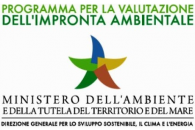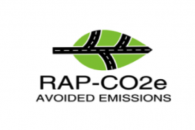Circular economy and bioeconomy: the “Central American integration towards the Bicentennial of Independence and 30 years of SICA” award also goes to Eng. R. Midence di Ecosurvey®.


Circular economy and bioeconomy: the “Central American integration towards the Bicentennial of Independence and 30 years of SICA” award also goes to Eng. R. Midence di Ecosurvey®.

Ecosurvey® experst habilitated as professional consultants for ReMade Italy certification. (more…)

Made Green in Italy in force since 13 June 2018. The Regulation for the implementation of the voluntary national scheme for the evaluation and communication of the environmental footprint of products adopted by the Minister of the Environment. Made Green Italy uses the methodology for determining the environmental footprint of products (PEF) defined in the…

Minimum Environmental Criteria (CAM in Italian) established by the Plan for the environmental sustainability of consumption in the public administration sector and are adopted by Decree of the Minister of the Environment for the Protection of Land and Sea (IT). CAMs are mandatory for all contracting stations pursuant to art. 18 of Law 221/2015, of…

Ecosurvey Ecomondo 2017 Avoided CO2 emissions In collaboration with the Department of Civil Engineering, Chemistry, Environmental and Materials of the University of Bologna, the “Development of a standard for calculation of avoided emissions of a plant that re-uses milled road in the production of bituminous conglomerate” is proposed. The ECOMONDO 2017 Technical Committee, The Green Technology…

“Towards a circular economy model for Italy” is the way for the public consultation of the Environment Ministry Circular Action Plan until 18.09.2017. The action promoted by the Ministry of the Environment aims to provide a general framework for the circular economy as well as to define our country’s strategic position on the theme, in…

The RAP-CO2 project considers Life Cycle Thinking (LCT) and the evaluation of the life cycle of the bituminous conglomerate from the cradle to the grave. The following activities carried out at the aggregate production site (quarry) are considered: deforestation of the site that houses the quarry, which reduces the ability to sequestrate CO2 due to…
